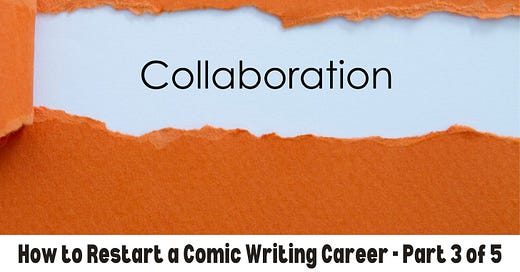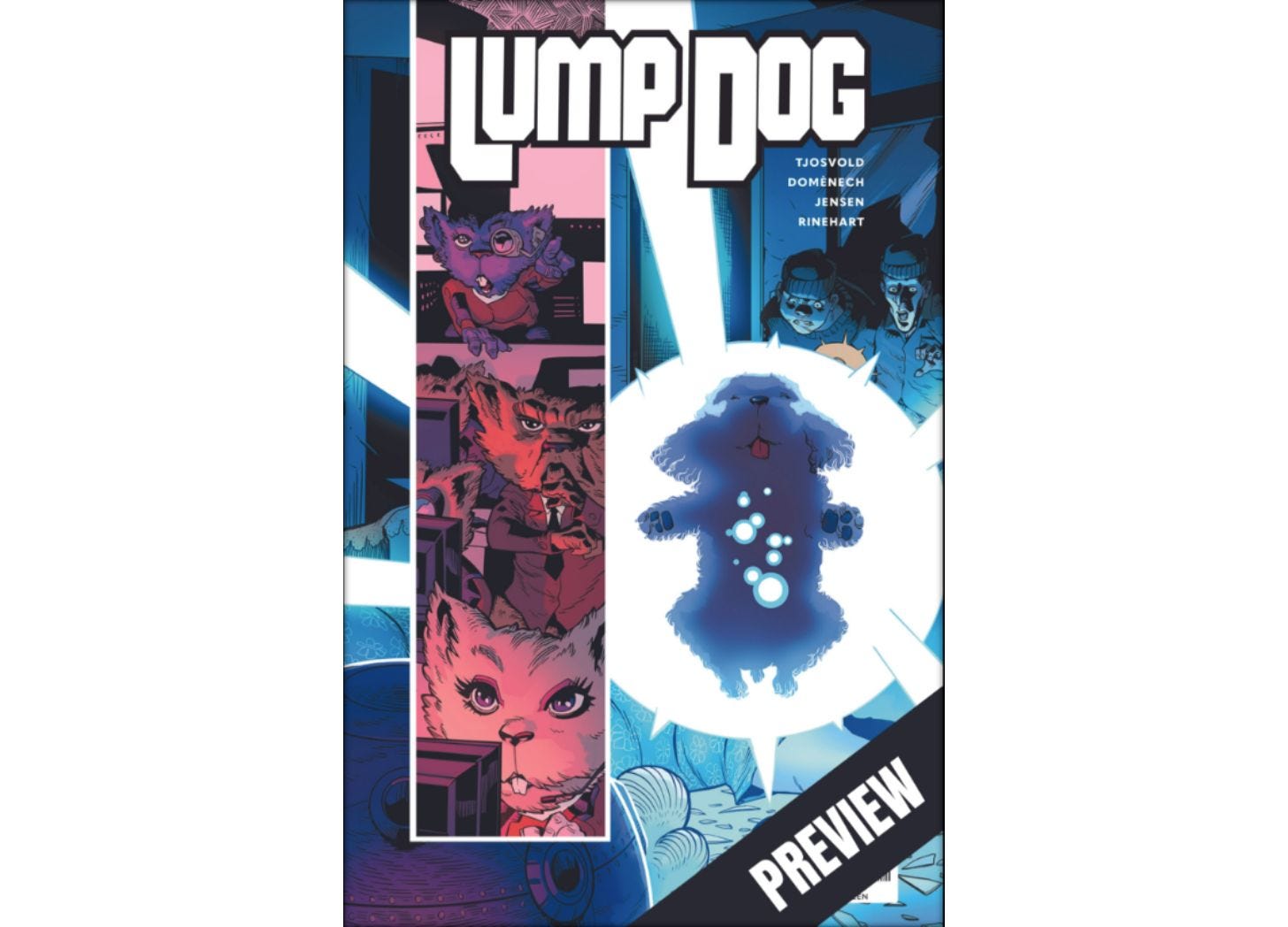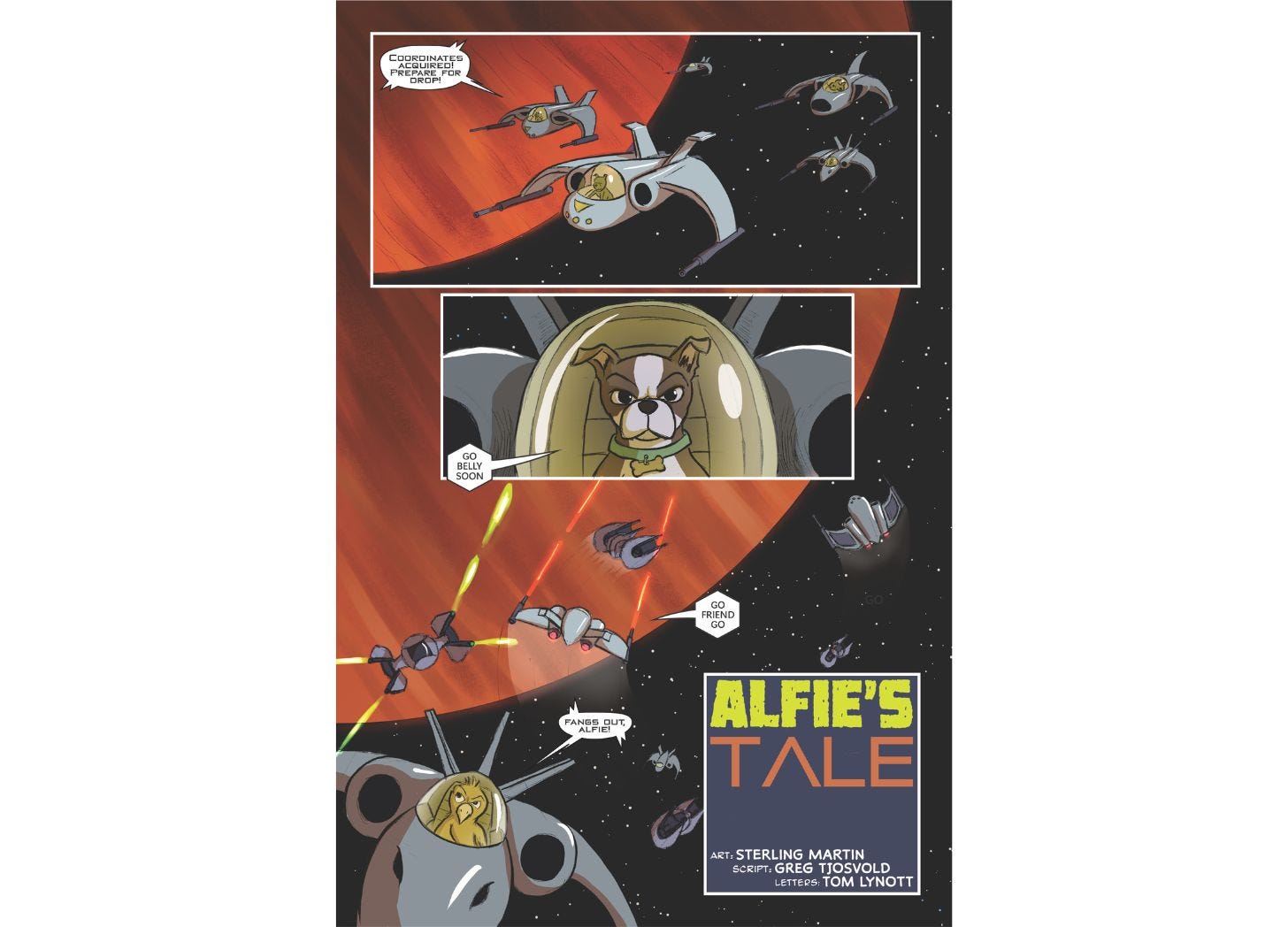In my previous post, I discussed a few ways I plan to save money moving forward in an effort to make my career as a comic writer more sustainable. However, the harsh reality is that the cost of software subscriptions and comic purchases pales in comparison to the single most significant expense in the comics business: hiring artists, letterers, and colorists to transform scripts into finished comics.
For someone unfamiliar with the industry, it might seem like printing would be the most expensive part of creating a comic. Even for a longer-form comic—say, a 40-page story—the printing costs to fulfill a typical small Kickstarter campaign accounts for, at most, about 20% of the total production budget. The real cost lies in the art. High-quality work from skilled artists is expensive—there’s no way around that.
In today’s indie comic scene, with few exceptions, the responsibility for funding this production falls on the writer. My credit cards currently bear the "battle wounds” of this reality. But this can’t continue. If I want to make my career sustainable, I need to explore alternatives. Fortunately, there are exceptions to the traditional publisher model, and I plan to lean into some of those options moving forward. Finding a way to balance creative ambition with financial practicality will be essential to my success as an indie comic writer.
What follows are a few of the steps I plan to take to ensure that my comic writing endeavours remain cash-flow positive at all times.
1. I’ll Still Pay Artists
Because I know some of my artist collaborators—whom I’ve paid in the past—might read this, I want to address the elephant in the room: I am not going to stop paying artists. However, what will change is how I approach funding. Moving forward, I will only pay artists with money that’s already in the bank. Whether that revenue comes from sales, grants, leftover funds from my monthly pension, or even the resale of some of my comic collection, the key is that I’ll accumulate the necessary reserves before commissioning work.
In my previous post, I talked about learning to draw. Even if, seven years from now, I develop reasonable drawing skills (and that’s the goal), the talented artists I currently work with will also have improved significantly over that time. If I want the best possible version of comics I’ve already started, I’ll still need to hire skilled, higher-profile artists who are further along in their careers than I am. (Sergi—if you’re reading this—don’t panic! You’re the artist for The Lump Sum Saga for as long as you want to be!)
Why Not Do This Sooner?
You may wonder why I didn’t adopt this approach earlier.
The reality is that funding comics this way—paying only from existing reserves—has the potential to dramatically slow down production and this has negative consequences for fans and a developing career.
So, how do I plan for slower production while still engaging fans? After giving this a lot of thought, I feel the solution lies in releasing The Lump Sum Saga in chapters. When Kickstarter backers receive Lump Dog (the next issue of TLSS), they’ll see that the 40-page book is divided into chapters, each averaging about ten pages. While printing 10-page comics isn’t terribly marketable, there are ways to get these shorter chapters into fans’ hands digitally. Then, when enough chapters have been created to warrant a comic being printed, I can decide then if I want to proceed with a physical, printed version containing those chapters. (I’ll explore this option further in the final post of this series, titled A Critical Change.) For the foreseeable future, I see The Lump Sum Saga being the only series I will pay in advance to produce.
2. Becoming a Pitch-er
Remember when I previously mentioned that starting your comics career with a massive graphic novel isn’t the best idea? Well, we’ve stumbled upon yet another reason why that is true. If I only produce comics when I’ve saved enough money to fund the artwork—considering The Lump Sum Saga story arc has dozens of more chapters—this project alone could lock me into one project for years. Focusing exclusively on a single series would limit my ability to explore other genres and story lengths, which isn’t ideal for developing a versatile comics career.
So, what’s the solution? One approach I’m leaning into is moving away from writing full comic scripts - instead creating pitch documents for full series—at least until I’ve defeated my looming backlog of story ideas. Producing a two-page pitch for a full series can be done much quicker than writing even one full script. I would like to ensure that, should I “get hit by a bus” (or worse), the huge backlog of stories rattling around in my oversized Viking skull would still have a chance of being completed without me. This approach would get me closer to accomplishing this goal.
Attracting Collaborators
Initially, my pitches are unlikely to attract attention from major publishers. Instead, I envision these documents being aimed at potential collaborators—specifically artists who appreciate my previous work and might consider partnering on a project on spec. These artists would be willing to take on the financial and sunk-cost-of-time risk, knowing they’d be paid only after the comic generates revenue.
Think about it: If industry superstar Scott Snyder offered up a script to illustrate, most artists would jump at the chance to collaborate with him, even if payment came only from backend sales. But here’s the reality—I’m no Scott Snyder. I’m at the start of my comics writing career and have yet to prove I can create a highly marketable comic. The risk-reward ratio of working with a newcomer like me is high, especially when you consider that working on my comics will distract any artist from working on their comics.
To lessen the risk, my pitch documents will serve as detailed sales pitches, clearly outlining the vision for the project. Any artist brave enough to join me will know exactly what they’re risking their time to produce. And that’s the truth of it—they’d be taking a significant leap of faith, sharing in the risk of the project’s success.
Who Might Be Interested?
Most likely, this approach will only attract newer artists without extensive portfolios who will be looking to create proof-of-skills work. They may also be creatives with little interest in running their own Kickstarter campaigns or sales channels. If I’m particularly lucky, I might find more experienced artists excited by how their style would thrive with my story as their pallet.
While it is unlikely I will attract many established artists to create a full comic, it is not beyond reason that my series pitch documents might attract artists willing to create the first six pages for a publisher pitch package. While landing a publisher deal is increasingly rare, it’s not entirely unheard of, and being attached to a fully fleshed-out pitch package that includes artwork may be intriguing for some artists.
3. Exploring Short-Form Anthology Work
Beyond creating more pitch documents, another avenue I plan to lean into as a comic writer is short-form anthology work. I have several ideas for stories ranging from 2 to 6 pages. These shorter page counts increase the likelihood of finding an artist willing to collaborate on spec, as the time/risk investment for them is much smaller. I’ll always be grateful to my friend Sterling Martin for working with me on our first successful anthology contribution—you can read Alfie’s Tail on GlobalComix.
Anthology work offers additional advantages. It will allow me to explore multiple genres, as many anthology collections revolve around a central concept and invite creators to craft stories that fit. These themes can vary widely, from slice-of-life tales to genre-specific works or even stories tied to a particular season or location. Diving deeper into the world of anthologies will help me build my portfolio while broadening my artistic range. By contributing to these collections, I can experiment with different styles and storytelling techniques, all while continuing to develop as a writer.
I plan to use the Tech for Comics website as a repository for my pitch documents and anthology scripts. If you are an artist and see something that interests you, please feel free to reach out to find out more. Just know that I will not be able to pay you upfront. If that still works for you, let’s talk!







